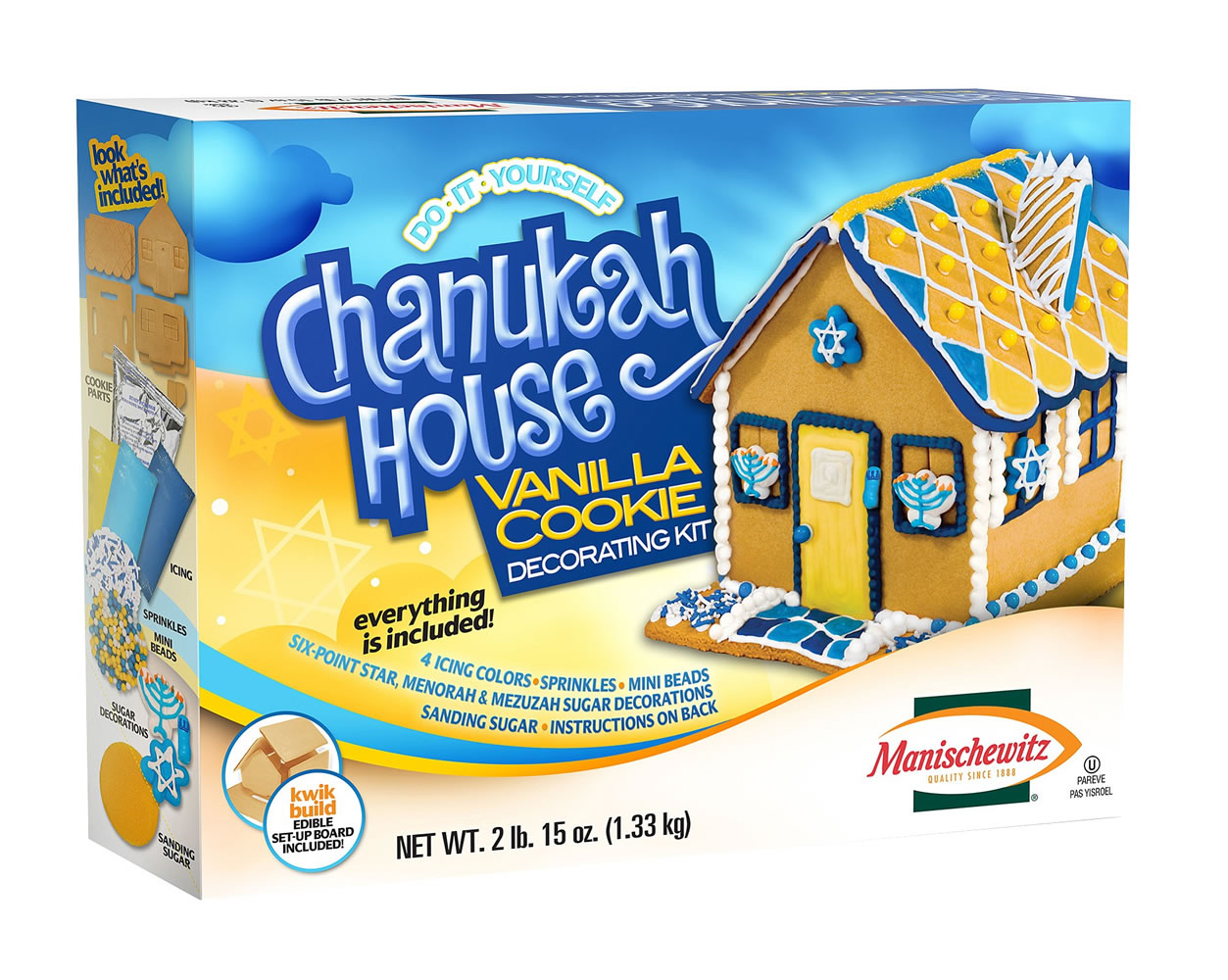NEW YORK — Christmas has Elf on the Shelf. Now Hanukkah has Mensch on a Bench — not to mention Maccabee on the Mantel.
Christmas has gingerbread houses; Manischewitz sells Chanukah House kits, using cookie dough with blue-and-white icing.
These are just a few of the Hanukkah-themed products inspired by Christmas traditions and toys. Pinterest and Etsy are loaded with blue-and-white Hanukkah crafts like wreaths and stockings. There are Hanukkah greeting cards, cookie cutters, and even tree ornaments shaped like the three symbols — Stars of David, menorahs and dreidels — that scream “Hanukkah!” amid a sea of holiday merchandise adorned with Christmas trees and Santas.
You can also buy a $285, 6-foot Menorah Tree, shaped like a candelabra, with pine garlands wrapped around each of the menorah’s nine candle-holders.
Some may say “Oy vey!” to all this kitschy retooling of Christmas stuff for Jewish consumers. But others, such as Rabbi Evan Moffic of Congregation Solel in suburban Chicago, ask, “Why not?”
He sees the crossover trend as part of how Jews “embrace the larger culture.” Moffic points out that even dreidels, the spinning tops that are a traditional Hanukkah toy, were borrowed from German culture.
Latkes, the fried pancakes that are a quintessential Hanukkah food, are a crossover tradition, too. They’re made from potatoes, which were abundant in Eastern Europe, where millions of Jews lived for centuries.
“What most of us think of as Jewish food was borrowed from all the different countries Jews lived in in Eastern Europe,” said Ted Merwin, a Dickinson College professor who’s writing a book about the history of Jewish delis called “Pastrami on Rye.” “I don’t know why people think that when Jews come to America we would stop taking from the surrounding culture.”
Merwin says the Hanukkah-Christmas crossover products are “driven by high rates of intermarriage between Jews and Christians, but some of it is simply the reality” of living as a minority in a multicultural society.
Dianne Ashton, a Rowan University professor and author of “Hanukkah in America,” says Jews began giving gifts at Hanukkah to show they had joined America’s consumer culture: “For immigrants in the early 20th century on the Lower East Side, buying presents for your kids showed you weren’t a greenhorn, and it also showed that you had earned enough money and had a few pennies extra.”
The custom of “Hanukkah bushes” instead of Christmas trees emerged in the 1950s, Ashton said, along with postwar suburban life.
“You were no longer Jews living in urban ethnic enclaves where everybody was Jewish,” Ashton explained. “Here children were much more exposed to what their gentile peers were doing and how their neighbors’ houses were decorated.”
Neal Hoffman created Mensch on a Bench last year after his son asked for Elf on the Shelf, the doll that watches kids’ behavior so Santa knows whether they deserve Christmas presents. Hoffman is Jewish, his wife is Catholic, but they’re raising their children Jewish. He raised $22,000 on Kickstarter for a prototype Mensch last year, and is producing 50,000 units for sale this year in retailers such as Target and Toys R Us.
But Mensch on a Bench is different from Elf on the Shelf: Kids can’t touch the elf, but the mensch “is an old Jewish guy” designed to be played with like any doll, Hoffman said. It comes with a guidebook for family activities for each of Hanukkah’s eight nights, including collecting presents for others in need.
Other Hanukkah toys that echo Elf on the Shelf include Kippah Kantor and Maccabee on the Mantel. The Maccabee doll comes with a book that tells the Hanukkah story, in which a band of Jewish soldiers called Maccabees defeated the Syrians, who had tried to force their Jewish subjects to give up their religion.
The Manischewitz Company — best known for selling Passover matzo — launched Chanukah House kits in 2012. “We want to give families a fun activity to do,” said spokeswoman Sara Stromer. Manischewitz hosts a competition on Facebook for the best-decorated house, with a $2,000 first prize.
Harbor Sweets, a small, New England handcrafted-chocolate company, started selling Hanukkah gift boxes decorated with menorahs in response to customer demand.
One of Merwin’s favorite examples of the blurring of the two holidays is a children’s book, “How Murray Saved Christmas,” a rhyming spoof of ” ‘Twas the Night Before Christmas.” Murray, a deli owner, fills in for Santa and gets the toys delivered even though he smells like pickles and can’t remember the reindeer names.
“It’s a brilliant parody,” said Merwin.



